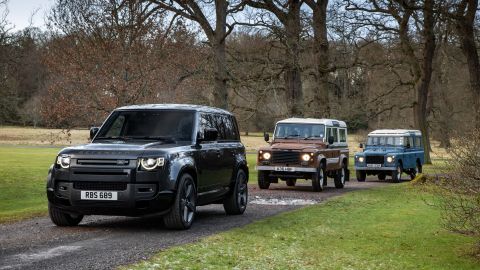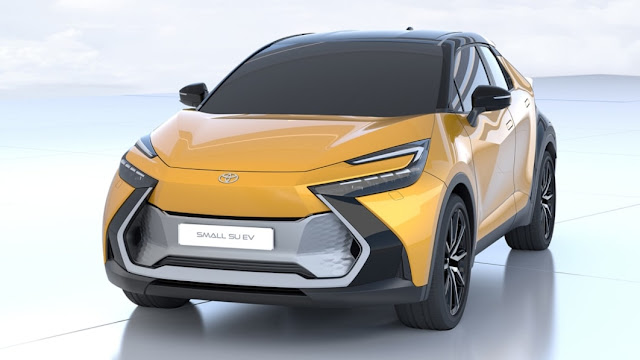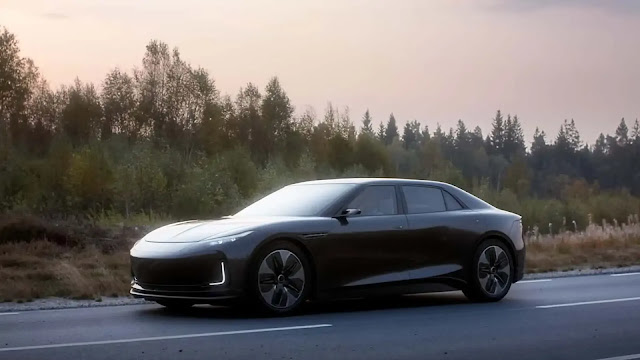Land Rover's Masterplan to Reinvent Itself and Dominate the Luxury EV Market
Land Rover, a renowned name in the automotive industry, is gearing up for a massive transformation to regain its lost glory. Facing challenges like declining sales and the absence of electric vehicle (EV) offerings, Land Rover has devised a masterplan to make a stunning comeback. In this article, we explore the brand's struggles, its strategic rebranding, and its ambitious goals to become a leading player in the luxury EV market. Join us as we delve into Land Rover's journey of reinvention.
Land Rover's Struggles and the EV Gap
Land Rover has found itself trailing behind its European rivals, lacking the innovation and market presence needed to thrive. While competitors like BMW and Mercedes have already established their EV models, Land Rover has been slow to embrace electrification, resulting in poor quarterly performance and declining sales. Furthermore, emerging players like Tesla and Chinese manufacturers, including BYD, are rapidly gaining traction in the luxury SUV segment. Land Rover's outdated product lineup and limited adoption of EV technology have further contributed to its challenges.
The Bold Reimagine Strategy and Sub-Brands
Recognizing the need for a radical shift, Jaguar Land Rover (JLR) is undergoing a significant rebranding initiative. While Jaguar transforms into a luxury EV brand, Land Rover will be split into three sub-brands: Range Rover, Defender, and Discovery. The Land Rover name will serve as a trusted emblem to support the sales of new luxury models. JLR's comprehensive "Reimagine" phase aims to achieve carbon neutrality by 2039, revolutionizing the entire company.
Challenges Faced by Jaguar Land Rover
Jaguar Land Rover's challenges are multi-fold. During the global semiconductor shortage, the company struggled to adapt quickly, resulting in an order backlog of nearly 200,000 units. This, coupled with CEO Thierry Bollore's short tenure and dwindling sales numbers, presented a daunting uphill battle. Despite setting a target of selling 1 million units, JLR fell short, with sales remaining under 300,000 by 2022. The decline in production by 39% from 2019 to 2022 further exacerbated the situation.
Outdated Lineup and Jaguar's Aging Models
Land Rover's outdated product lineup, despite the successful launch of the new Defender, poses a significant hurdle. However, the challenge extends beyond Land Rover, as sister company Jaguar grapples with an aging lineup. Models like the F-Type, XF, XJ, and XE face issues such as lack of updates, outdated features, discontinuation, and refinement/engine choices. Jaguar Land Rover's future relies on revamping its offerings to captivate modern consumers.
The Rise of Competitors and the Urgency for Change
As Land Rover faces an uphill battle, its competitors are gaining a significant advantage. BMW's $32 billion investment in EV research and development and Volkswagen's $89 billion commitment to electrification projects have put them ahead in the race. Moreover, new players like Rivian and Chinese companies such as XPeng and BYD are intensifying the competition. Land Rover must act swiftly and secure substantial capital or consider a takeover to survive and thrive.
Promising Signs and Transformational Plans
Amidst the challenges, there is hope for Jaguar Land Rover. Recent financial reports show the company achieving profitability and positive cash flow in Q3 FY23, with $7.67 billion in revenue. The demand for Range Rover models remains strong, contributing to their success. The Tata Group, JLR's parent conglomerate, plans ton invest $19 billion over the next five years, establishing a super factory for all-electric vehicles by 2030. The British government has also pledged subsidies worth 500 million pounds to ensure the factory's construction in the U.K.
Electric Dreams and Innovative Partnerships
CEO Adrian Mardell confirmed JLR's transformation plans, including converting the Halewood plant into an exclusive EV production facility by 2030. The company intends to launch its first mid-size Range Rover EV SUV in 2025, accompanied by a new Jaguar GT sedan with a record-breaking range of 430 miles. JLR is developing three vehicle architecture platforms, streamlining its current seven platforms. Additionally, JLR's collaboration with Agratas for long-range batteries and fast-charging solutions promises enhanced performance and sustainability.
A Glimpse of the Revived Land Rover
While challenges persist, Land Rover's journey toward reinvention is a promising one. The company's renowned design prowess, blending modern elements with classic charm, continues to captivate enthusiasts. With the highly successful Defender 90 as a testament to their design capabilities, anticipation grows for the new electric Jaguar and Land Rover models. Although the road to success may be challenging, Land Rover's strategic plans position it for a triumphant comeback without relying on foreign takeovers.
Land Rover's ambitious masterplan to reinvent itself and dominate the luxury EV market reflects its determination to reclaim its position as a leader in the automotive industry. By addressing the shortcomings, implementing strategic rebranding, and forging innovative partnerships, Land Rover aims to establish a sustainable future. As we witness the transformation unfold, enthusiasts eagerly await the arrival of electric Jaguar and Land Rover models that blend cutting-edge technology with timeless British craftsmanship. The stage is set for Land Rover's grand resurgence, and the automotive world awaits its triumphant return.




Comments